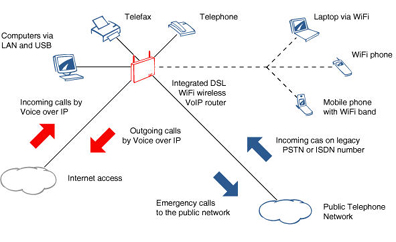Cell carriers, ignore CellVoWLAN at your peril


That sage advice is implied in a new InfoTech report entitled "Dual-Mode Cellular/VoWLAN Solutions: Enterprise Preferences and Plans."
Vo, of course, stands for voice, WLAN for Wireless Local Area Network, and that is a cell phone on your hip, right?
"Deliberate or not, we have a number of activities working together to stimulate enterprise demand for dual-mode solutions that barely exist. This, in turn, exerts pressure on lagging players to participate in getting the nascent dual-mode capability to market," writes Jeanine Sterling, vice president and senior program director of the "InfoTrack for Enterprise Mobility" (IEM) program.
Sterling adds that half of the U.S. enterprise decision-makers recently interviewed by InfoTech for the report said they already have had cellular/VoWLAN solution pitched to them by an outside party.
Not a cell provider, but– in many cases by an IP-PBX manufacturer. And these decision-makers seem to be listening: in the U.S. alone, 76% of interviewees foresee at least some of their mobile workers using a dual-mode phone within the next three years.
"Interest in cellular/VoWLAN solutions is being stimulated in the enterprise market on a number of simultaneous fronts – including the introduction of handset prototypes, the selling tactics of IP-PBX vendors, the imminent opening of retail stores (and direct touch) by device manufacturers, and a steady stream of high-profile articles in industry publications," Sterling adds.
She then makes the case that cell phone carriers better notice this trend, and get with the program.
"Cellular carriers have been described as one of the last holdouts when it comes to buying into providing a converged Cellular/VoWLAN capability," Sterling adds. "But one of the realities they have to be facing up to is the growing strength of end-user expectations and demand.
"In marketing terms, a pull strategy is developing. Enterprises are being pulled in by a perfect storm of demand stimulators. And they are beginning to create a level of expectation that the cellular carriers cannot ignore," she writes. "In our competitive telecom market, no one wants to look like a laggard."
Yes, I say, but to "not want to look like a laggard," you first have to convince yourself you are running the risk of being one. The cell phone companies are so arrogant, such wielders of power, that there may be too much encaked hubris for them to admit the need for a reality check such as this report recommends.